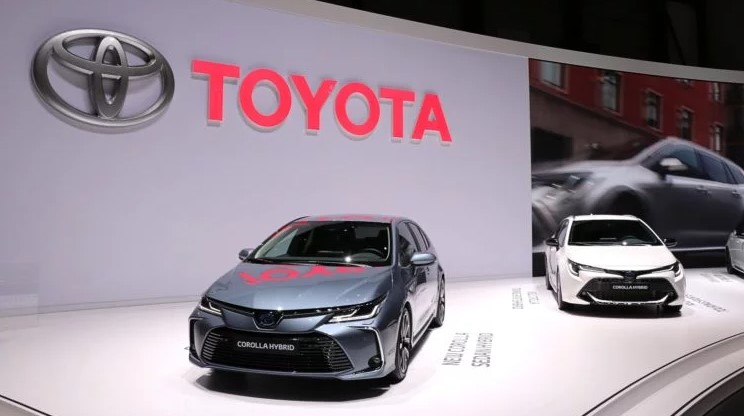 Industries
Industries
The Japanese Automotive Market: Driving Strong Demand in 2021…
By Emma Regan

After the second world war, Japan needed to boost its economy and did so by manufacturing vehicles. Now, the nation is world-leading in the automotive industry and is widely known for its cutting-edge technology and invigorating ideas. Here, we look at how Japan has catered to the domestic and global market through its peculiar characteristics, response to globalized supply chains, shift to green technology, and how the worldwide pandemic has affected the Japanese automotive market.
Need help with marketing in Japan? Contact us.
Overview of the Japanese Automotive Market
The automotive sector in Japan is the third-largest automotive producing industry in the world, with 78 factories in 22 prefectures and employing over 5.5 million people, it is a major pillar of the country’s economy. Automotive manufacturing takes up 89% of the country’s largest manufacturing sector (the transportation machinery industry) and auto parts suppliers have also grown a substantial part of Japan’s economy, spreading into other industries such as chemicals and rubber. It is a highly innovative and technology-driven industry, with increased production of hybrid and electric vehicles being brought onto the domestic and global market and an increase of supply and demand on an international scale.
Domestic brands such as Toyota, Nissan, Honda, Suzuki and Mitsubishi dominate the Japanese automotive market, with foreign-manufactured cars seen more as status symbols due to the incredibly high maintenance cost of imported vehicles. The majority of car owners reside in rural areas of Japan, while its urban population heavily relies on public transport.
Kei cars and motorcycles are also affordable alternatives to regular-sized cars and satisfy the country’s demand for convenience in tiny spaces, however, the Japanese automotive industry is becoming more environmentally aware thus consumers are moving away from motorcycles to bicycles and e-bikes.
Kei Cars
In order to cater to Japan’s limited space, ageing society and increase in single-person households, Japan’s automotive industry created ‘keijidōsha’ (軽自動車), light automobiles otherwise known as Kei cars. They are very small vehicles that benefit from certain tax insurance and regulations, making them much cheaper than regular passenger cars, but also easier to navigate in Japan’s metropolitan areas.
The success of Kei cars is limited to Japan, being bought mainly by first-time drivers and as a fashion statement by female drivers, yet they are sold across Europe. All of Japan’s major automotive brands manufacture ‘keijidōsha’, with 1.65 million sold in 2021. Honda’s N-Box dominated this category, selling almost 190 thousand units in the same year.

Best-selling Brands in Japan’s Automotive Industry
Toyota
Toyota is currently the top-selling vehicle brand in Japan, selling more cars than its competitors Nissan and Honda combined. In 2021, it sold 1.4 million vehicles in Japan and 10.5 million vehicles globally, an increase from the previous year. Yet its beginning was very humble, starting as a textile manufacturer in the mill town of Koromo, it is now one of the largest automakers in the world. The company has pushed boundaries, curated high-quality designs for practical and recreational use combined, and are responsible for pushing hybrid and electric cars to the forefront of the automotive sector in Japan with their model Toyota Yaris – the best-selling passenger car model in Japan.
Having released a two-seater electric vehicle predominantly aimed at older drivers in late 2020, and its first BEV (Battery Electric Vehicle) Toyota BZ4X in 2022 among plans to offer 30 BEVs by 2030, the company aims to increase its global sales of electric vehicles to 3.5 million units per year by 2030. Toyota CEO Akio Toyoda recently doubled down on this strategy of offering a wide range of options for consumers, having previously cited the diverse and unpredictable state of the world.
Not only does this accommodate the automotive sector in Japan, but Toyota has collaborated with Hitachi and JR East on developing railway vehicles equipped with hybrid systems (trials of which commenced in late March this year), and previously the company announced it would build a prototype ‘city of the future’, a fully-connected ecosystem powered by hydrogen fuel cells at the base of Mt. Fuji.

Nissan
Nissan is one of the giants in the Japanese automotive market, selling nearly half a million units in 2021, and has also expanded into the global market.
The company is one of the oldest in the Japanese auto sector, established in 1911 and manufactured trucks and planes for the Japanese army during the Second World War. It has partnered with various foreign brands such as Austin and Prince Motor Company, however, it is more recently in a horizontal keiretsu (系列) between Renault and Mitsubishi– an expansive network of companies working tightly to maintain mutually beneficial strategic relationships. Together, they have sold 10.6 million units in 2019. In 2022, Nissan launched the all-electric version of the new Townstar van, which is based on the Renault Kangoo and produced in France.
Growing demand for SUVs, light commercial vehicles and electric vehicles have helped Nissan’s sales numbers grow, with the keiretsu accounting for half of the electric vehicles sold worldwide back in 2016. The Nissan Leaf is a popular choice, now having sold 157,000 in Japan alone, as is the recently released Ariya model. By 2030, Nissan intends to offer 15 all-electric models and a total of 23 electrified cars.

Honda
Honda is another giant within the Japanese automotive market, almost 50% of automobile sales occurred in Japan and other Asian countries this year. Honda started by selling motorcycles in Japan post-war for the country to be mobile at a quick and affordable mass-producing rate. It became the biggest motorcycle manufacturer in Japan in the 1950s, and despite the recent decline in motorcycle sales in Japan, Honda is still the country’s leading domestic manufacturer of motorcycles (of 251cc and higher). In 2021, its unit sales amounted to approximately 22.31 thousand.
The company went onto manufacture cars during the 1960s and has since gone on to produce a wide variety, including Kei cars and electric vehicles. Signifying a step-up from its 2016 plans to have electric and hybrid vehicles make up two-thirds of its sales in 2030, Honda aims to have electric vehicles account for all its unit sales globally by 2040. The company also plans to work with tech giant Sony to create a new company for the production of electric vehicles, aiming to begin sales in 2025.

Yamaha
Famous for its product variety, Yamaha is a world-leading producer of motorcycles, marine products, intelligence machinery and from their sister company, musical instruments. It is the second-biggest motorcycle brand in Japan and the world, with a 41% share of net sales in Asia and generating ¥1.8 trillion globally in 2021 alone. Established in 1955, the company produced its first motorcycle in the same year, it launched the YA1 by demonstrating it in a motorcycling race in Japan where rival companies such as Honda would also publicize the superiority of their products.
Over the years, Yamaha has continued this rivalry, yet when the domestic market in Japan started to shrink, the companies teamed up to devote more resources in other Asian markets. Recently, Japan’s big four motorcycle brands have worked together to make a unified standard for electric motorcycles, helping to make the Japanese automotive market even more sustainable. After a successful collaboration with Gogoro (global technology leader in battery swapping ecosystems), Yamaha announced in 2022 that it will produce a second electric scooter with the company.

Suzuki
Suzuki is similar to Honda in that it’s a multifunctional company manufacturing automobiles, motorcycles, ATVs, engines, and wheelchairs. Starting out as a looming company, it is now part of the big four brands dominating the motorcycle world but also does exceptionally well in Japan with its range of Kei cars, sharing over 30% of the market in 2021.
In the 1980s, Suzuki entered a keiretsu with General Motors to start its expansion into the US market, which led to expanding to countries such as India, Germany, Thailand and China. At the beginning of 2020, the company said it would follow in Yamaha’s footsteps by releasing an electric scooter onto the Indian market, joining the global sustainable vehicle race. A possible market launch may be coming in 2023.

Impact of Covid-19 on the Japanese Automotive Market
During the COVID-19 pandemic, the Japanese automotive market was significantly affected, with all Japanese automakers having to close production plants all around the world for safety measures. Japan sales declined sharply by 23% in June of 2020, with Toyota still being the best-performing brand, followed by Honda and Nissan. However, Japanese automakers vowed to protect jobs against the worldwide pandemic, setting up a special fund for those who have been laid off to find jobs and even produced face masks.
Exports and imports were greatly affected by the pandemic, which includes the ‘chip shortages’. These semiconductor chips are necessary for car manufacturing, and their global supply shortages halted production for many Japanese automotive companies during the pandemic. Indeed, Toyota had to cut its global production in September 2021 by 40% from planned levels as a direct result of the shortage. However, now that the supply chains are stabilising, the Japanese automotive market is not only expected to recover, but the automotive industry is also expected to boost the overall Japanese economy.
This global crisis has also prompted many automotive companies to re-examine and plan for medium-to-long-term developments. Like with many other industries, the pandemic gave companies the opportunities to pause and rethink and prioritise their next goals. In Japan, it looks like most automotive industries are driving towards a cleaner, greener world with electrical vehicles.
The Future of the Japanese Automotive Market
While the global pandemic has had a massive impact on the automotive industry in Japan, it’s clear to see where the sector is going in terms of developing renewable, green technologies to be incorporated into vehicles. Demand for electric motorcycles is stronger now than ever before amid declining sales in Japan, so hopefully, these will be released on the Japanese automotive market soon enough and help spur growth in the sector. Japan remains to be a leader in this space, and the UK-Japan Trade Deal will also benefit the Japanese automotive market in the long run.
See also: IoT In Japan: Essential yet Lacking?
Keep checking back or follow us on LinkedIn, Facebook or Twitter to get notified about our latest posts. We’ll be adding more articles on technology developments and various sectors in Japan, so watch this space!
Alternatively, feel free to get in touch and see how we can help you develop your offering for the Japanese market.








